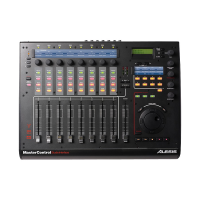it is necessary to locate any ground loops and break them in some way. And this creates a
dilemma; we either have to disconnect a signal screen at some point to break the loop, or we must
remove the mains earth and keep the signal screens connected. The latter usually works, but then
there will be no protective earth other than via the signal leads, which won't stand the kinds of
currents that occur during serious fault conditions. Furthermore, if the signal lead is unplugged, the
earth protection is completely removed. From a safety point of view, removing mains earths is not a
good thing !! :)
Note that equipment operating from external mains adaptors is designed to be used unearthed, and
so may be less susceptible to ground loop problems. However, if the unit is bolted to a metal rack,
a ground loop may be created via the casework of the unit.
If you draw out a wiring diagram for your system, including all the signal cables and mains leads
(only those with earths, not mains adaptors), you'll soon see where potential ground loop problems
lie. However, problems also arise when a ground signal path is completed by another route -- say
the metalwork of a rack system.
Michael Caluroso gives a LOT of good information:
The suggestion "Do not power the A6 and mixer or outboard gear by the same power outlet" begs
clarification.
Ideally you should power everything from one power outlet for best prevention of ground loops.
But you need to pay attention to the current draw/power consumption. If you trip the circuit breaker
because you added one too many items to the line or that climax in the music was too loud or the
fridge or AC is on the same circuit, than this raises a red flag.
In the standard house outlet in the US, an outlet is on a 15 amp circuit, so power=(voltage)x(current)
thus 120VAC times 15amps equals 1800 watts maximum out of that one outlet. All of your gear has
badges stating the power or the current draw; if the sum exceeds 1800 watts then you need a
separate circuit that is on the same primary of the first circuit, and you should seek the advice of a
licensed electrician or a knowledgeable friend because 1) the details of the last statement can't be
sufficiently explained in an eamil 2) this is a potential lethal hazard if you attempt it on your own and
3) I am not responsible for damages to property or for bodily injuries. We're getting into serious stuff
with power circuits that are best left to the right hands.
Now hold your horses: most of you with home studios don't have enough equipment to exceed a 15
amp circuit, with the possible exception of Mark and Amanda :) Not even a rock-n-roll band in
rehearsal draws that much. I have four racks full of gear, eight keyboards, 300W power amp, mixer/
tape deck, and my computer plugged into one outlet; I had *all* of that stuff powered on together on
more than one occasion and the circuit did not blow.
So the chances are very good that you can plug everything into one outlet.
If you are using power strips or extension cords, make sure they have good heavy cables; you want
14ga wire or bigger. Wire gauge is inversely proportional to wire size, IE a 12ga wire is bigger than
a 14ga wire. Bass-ackwards, I know. The bigger the wire, the more current it can safely handle. If
your power cable is ever warm when you hold it, then throw it out; it's toast and it's a fire hazard.
I have encountered power strips made with smaller 16ga or 18ga wire which is way inadequate for
large power loads like home studios. I have also encountered power strips that were incorrectly
wired, IE hot and neutral reversed.
***How to isolate ground loops***
As you isolate each unit for buzz, make sure all power originates from one outlet; every power strip,
every extension cord has to return to that one outlet.
Start by unplugging everything from the A6 except power and one audio cord from one main output,
and plug the main output DIRECTLY into your power amp - bypass the mixer, the FX, everything. If
there is no buzz, work your way back down the chain. When you get to your mixer, unplug
everything else, your other keyboards and rhythm boxes, your FX, youraural exciters, your limiters,
everything. The audio chain should be A6->mixer->power amp->monitors only. If either the mixer
or the power amp buzzes, there may be something incorrectly wired and you should get them
looked at. It does happen. There is no industry standard for separating earth ground (your outlet)
from local ground (your mixer/other devices) and unfortunately this is what happens when you mix
defferent brands of equipment.

